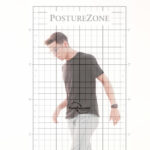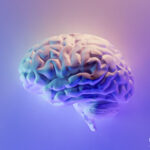The BodyMind of Interoception, Pain and Posture
We have a problem!
The Body-Mind of Interoception, Pain and Posture
Pain is when your body tells your mind “We have a problem!” Pain is a valuable physiologic response of the body to stress or damage… but it’s important to understand that the experience of pain is always, all in your mind.
Stubbing your big toe hurts. Bad enough to make you yell! The physiologic reality of what caused the pain signal could just be sudden pressure on soft tissue and cognitive surprise, or soft tissue tearing and more significant damage. Whether the pain fades in few minutes, or continues for a few weeks, the biology of the initial pain is pretty much the same-Incoming nerve signals (the afferents) going to the spinal cord, and then the brain.
Brain activity is how the mind knows there’s a problem, and we say “It hurts!”
To put it simply the perception of pain is a chemical and physiologic process of the brain and body, as interpreted by the mind. It could be a runner’s torn ligament (the distress of damage) or a weightlifter’s last repetition (the eustress of micro-tears required for muscle to strengthen). The information coming into the central nervous system could indicate joint over-stress, ligament tears, or even a bone fracture. But the pain exists only in the mind.
We experience pain is as a result of how the brains integrates and interprets many signals from the body. Signals from the skin and outside world (aka exteroception), as well as conscious and subconscious inputs such as thoughts, fears and memories.
In addition, there’s also many layers of internal signals-our interoception. When someone feels hunger, thirst, sexual desire or proprioceptive awareness, that feeling is our body talking to us via our interoceptive nervous system. Interoception is part of the governing mechanisms of our biology, our homeostasis (as well as our allostasis, which is how homeostasis shifts over time…but that’s a conversation for another day).
Brains take in far more information than we’re aware of, or ever use.

Human awareness is based on sensory input from outside the body (i.e. vision or hearing), as well as from inside the body (i.e. hunger and thirst). The first is exteroceptive, the second, Interoceptive. The brain integrates both into what the mind perceives. “Exteroceptive and interoceptive information can powerfully influence cognitive and emotional processes, and, importantly, vice versa” 1
Interoception also governs the biology of how humans experience emotions, as well as physical and mental pain.
Brains take in far more information than we’re aware of, and most of our interoceptive senses are unconscious. However, humans are unique in that we can choose to focus and become more aware of aspects of our interoception, subtleties of how we function.
In a 2023 systematic review of studies, What is the role of interoception in the symptom experience of people with a chronic condition?2, Locatelli et al looked at chronic pain in physical neuromuscular (NMS) conditions like back pain, as well as chronic emotional conditions including anxiety, stress, depression and other psychologic conditions.
In multiple studies across domains exploring both mind and body, people were asked to focus on interoceptive sensations, input from inside the body like breathing and heartbeat. Subjects who were less accurate in their awareness of their body’s interoception couldn’t react accurately to their body’s inner signals. Locatelli’s conclusions: “Interoceptive abilities are lower in patients with chronic conditions” and that “higher interoceptive sensibility is associated with lower symptom severity and frequency”.
In other words, people who are more connected to their body’s inner feelings have less pain, less often.
Integrating Thought, Motion and Balance with Posture
Proprioception, balance and posture are all interoceptive, which is why a focus on strengthening posture awareness and control is a powerful tool for NMS pros to improve interoceptive awareness.

According to Locatelli, “The brain uses interoceptive signals to control bodily processes and eventually maintain a physiological homeostasis. When the organism fails to efficiently process and respond to bottle signals including symptoms diseases make progress. Indeed, accumulating research on…actively detecting and responding to internal battery signals is important for physical and mental well-being” 3
The chiropractors, therapists and trainers who actually touch people where they hurt, at the site of perceived pain, are uniquely positioned to experientially teach interoceptive awareness and strengthen the accuracy of how people listen to their body. For people in with biomechanic issues, congruently communicating basic concepts of how they move with interoceptive awareness and subtle, focused motion rehab empowers patients and clients towards greater interoceptive awareness and somatic control.
Especially for those suffering chronic pain, as well as to mitigate the risk of chronic pain developing in acute cases, people remember the experience connecting with subtleties of their body. From the first visit on, NMS pros can easily integrate rehab to more accurate connect someone with their body’s perceptions of their pain, the functional limits of when it hurts, and how to explore their movement and ability to move well-with less or no even no pain!
For non-pathologic biomechanic issues, by perceiving the limits of their pain more accurately, inside and out, people learn to fear the pain less and discover what they can do, and how well they can do it.
The sense of control by systematically focusing on the subtleties of their movements StrongPosture® training encourages people to move better, heal stronger, and build a deeper relationships with their NMS pro.
Looking for ways to integrate these concepts with patients?
- Get the free Upper body Posture Awareness Questionnaire (uPAQ). This is a tool for NMS pros to build interoceptive posture awareness (Click here to download)
- Subscribe to 7SSP – the at-home patient exercise rehab program. Practitioners have unlimited access for their clientele. (Find out more)
1 [1] Manos Tsakiris and Helena De Preester (Oxford: Oxford University Press), 368 pages, ISBN: 9780198811930. (2018). The Interoceptive Mind: From Homeostasis to Awareness
2 Locatelli, G., Matus, A., James, R., Salmoirago-Blotcher, E., Ausili, D., Vellone, E. et al. (2023). What is the role of interoception in the symptom experience of people with a chronic condition? A systematic review. Neuroscience & Biobehavioral Reviews, 105142.
3 Locatelli, from Farb, Interoception, contemplative practice





















